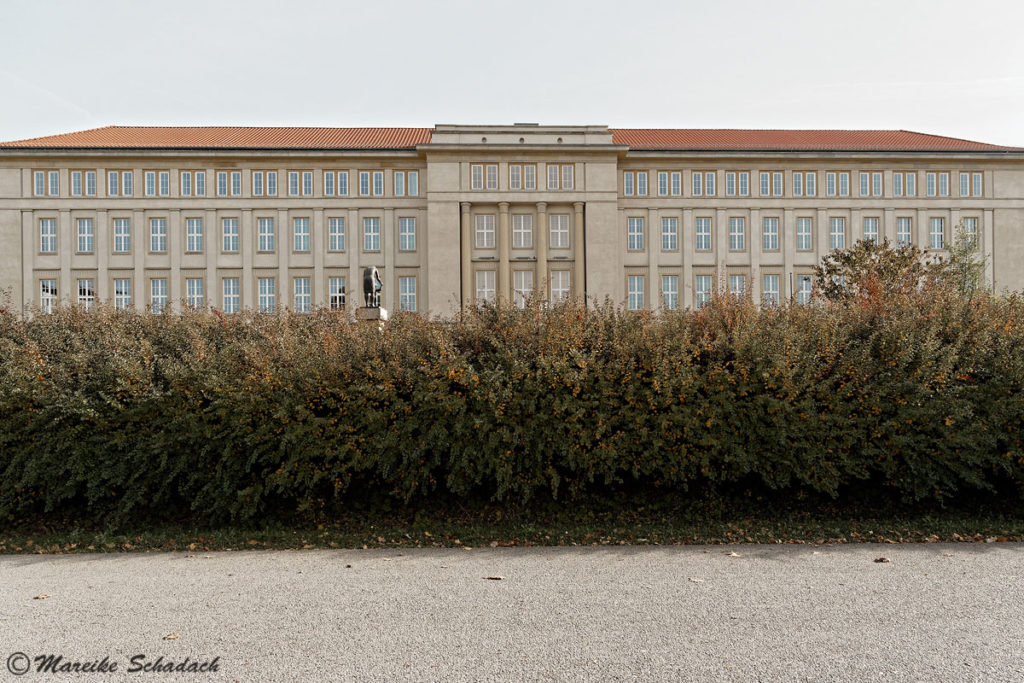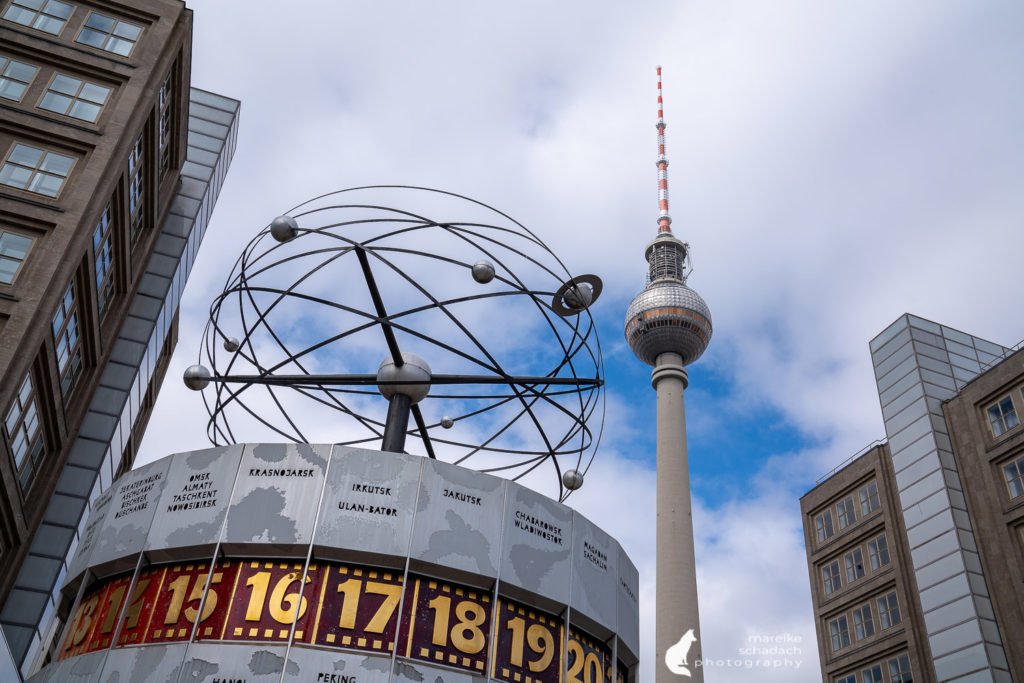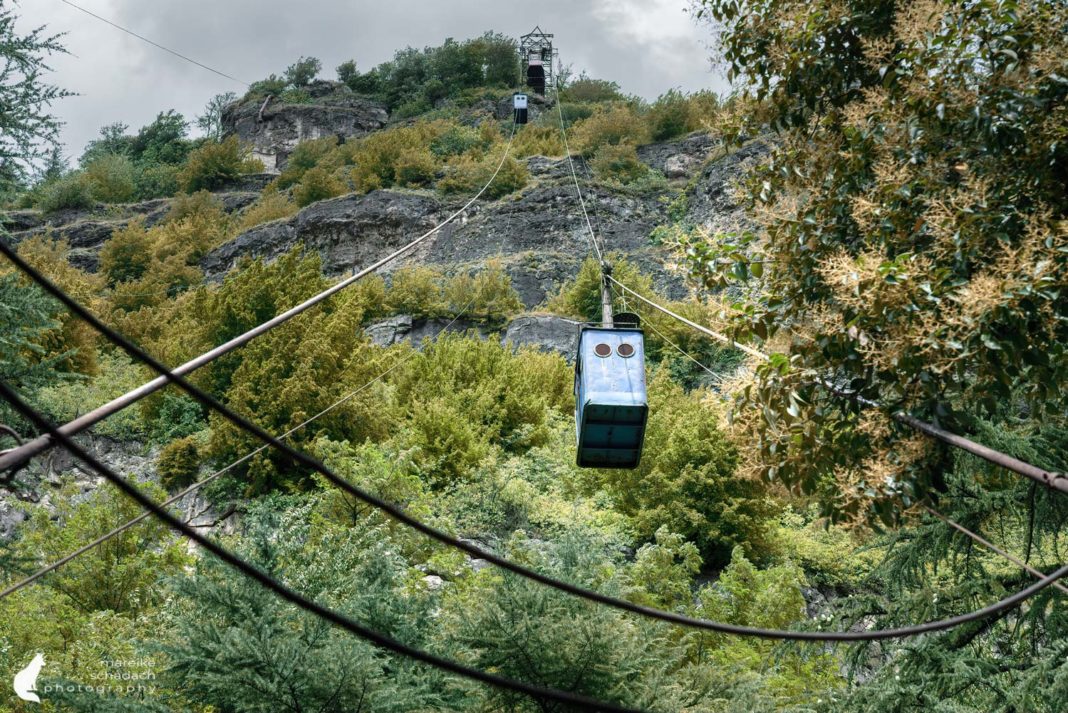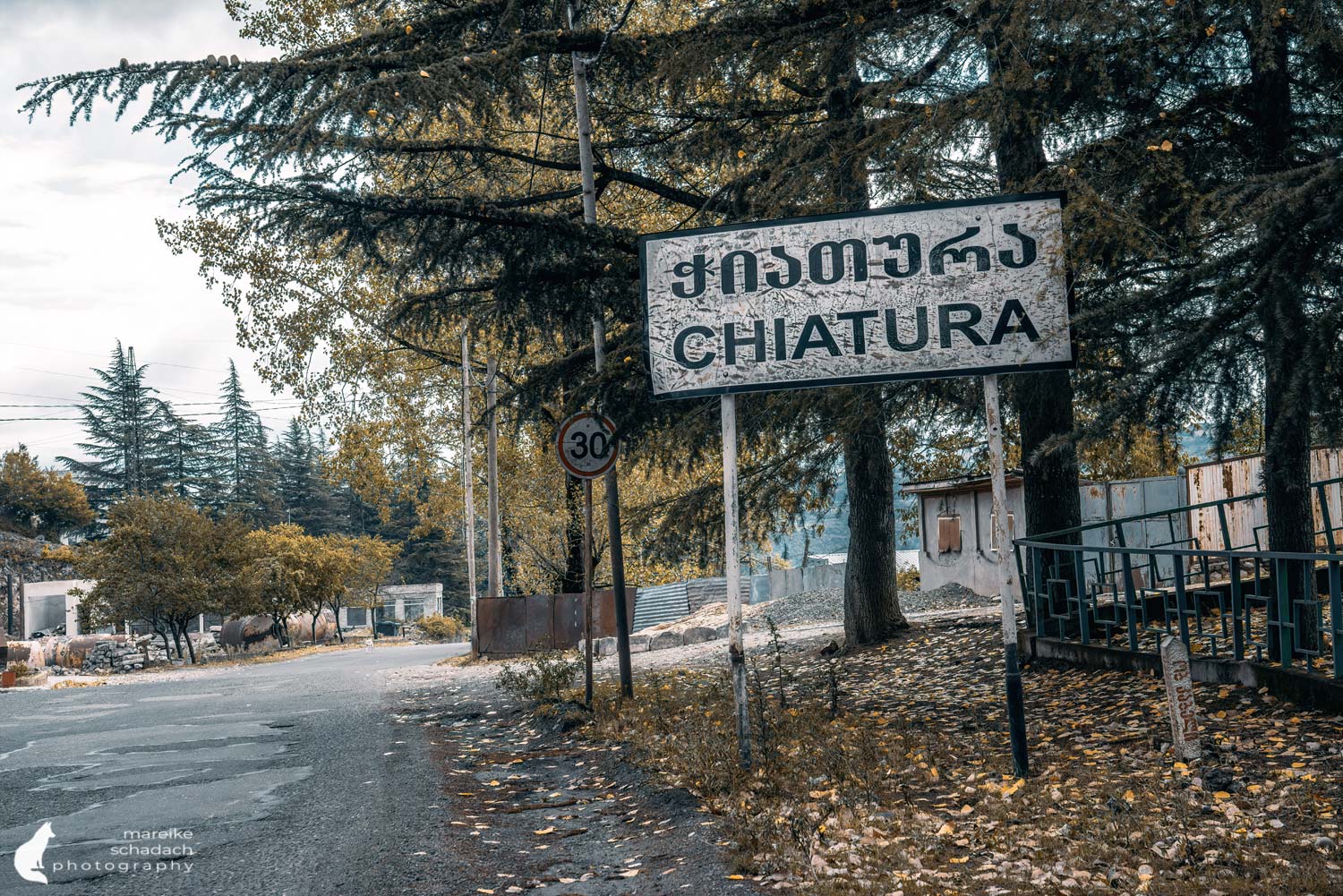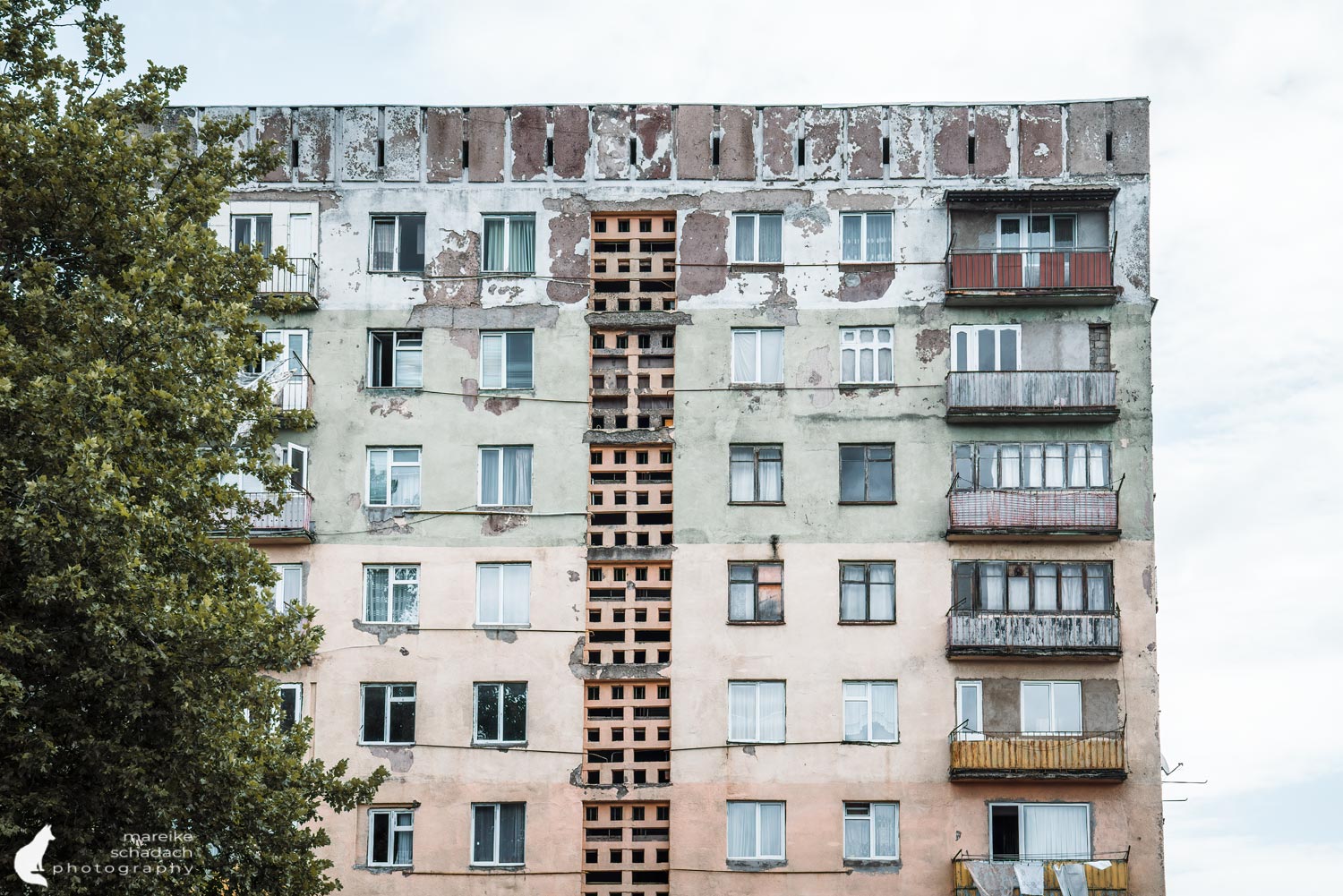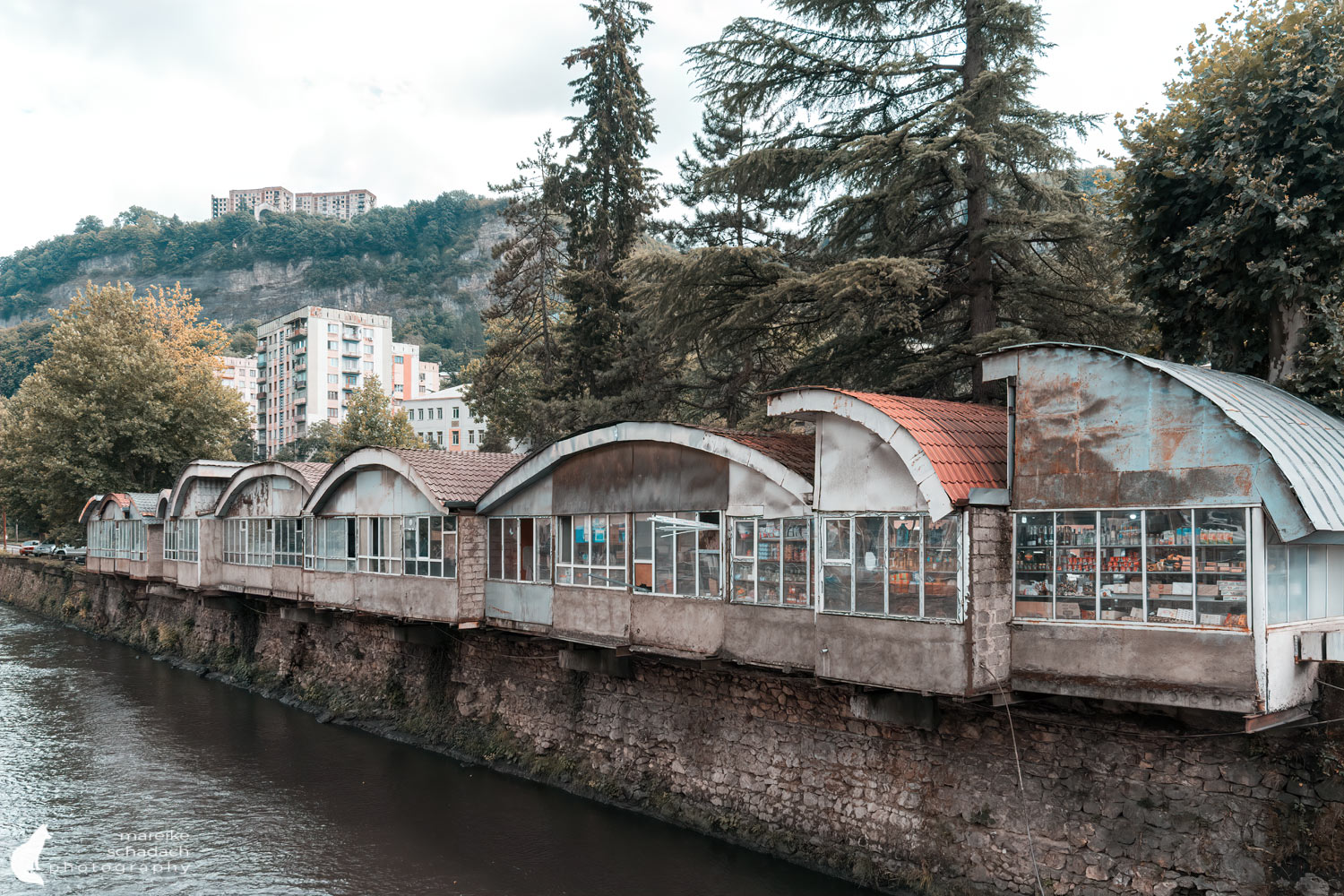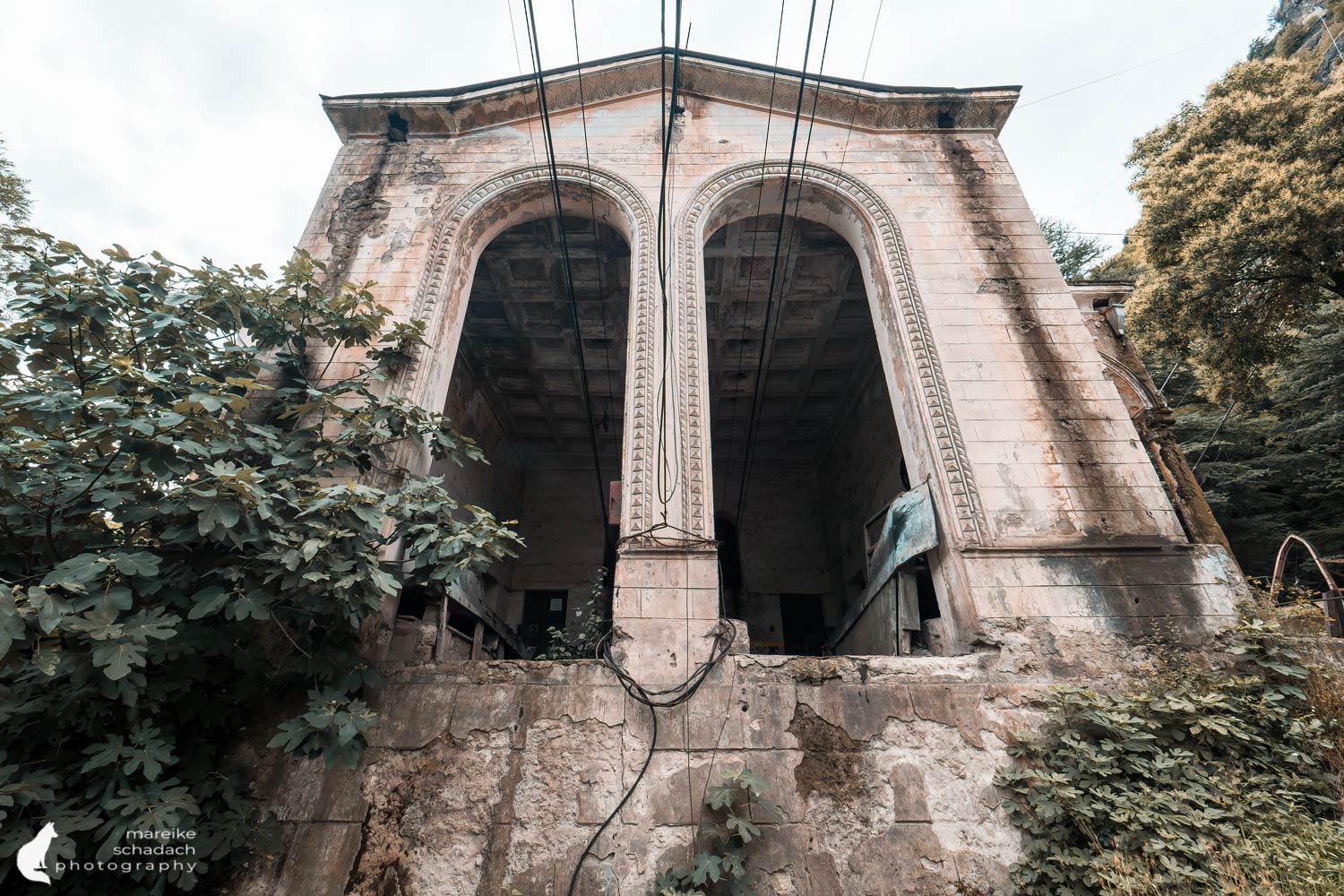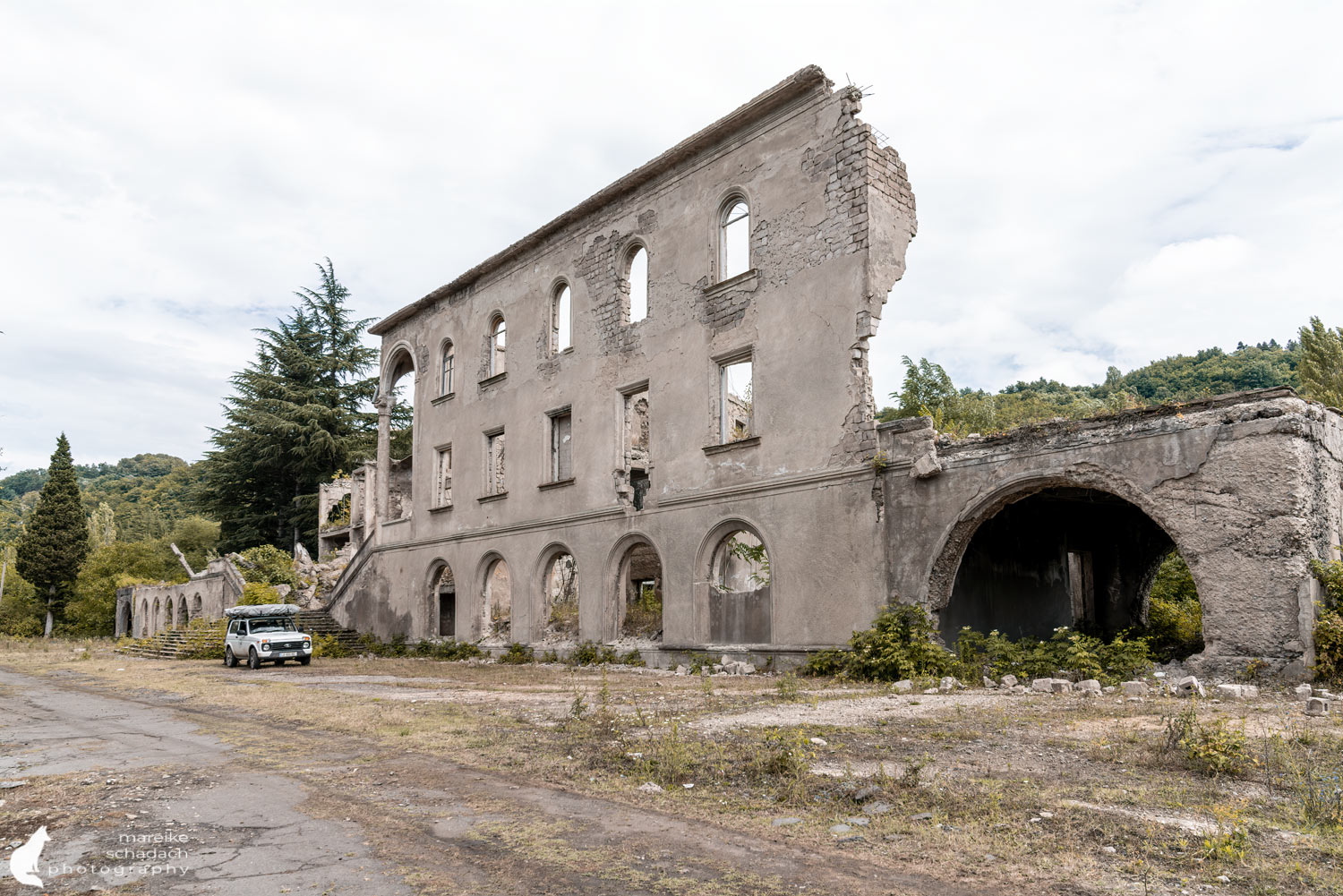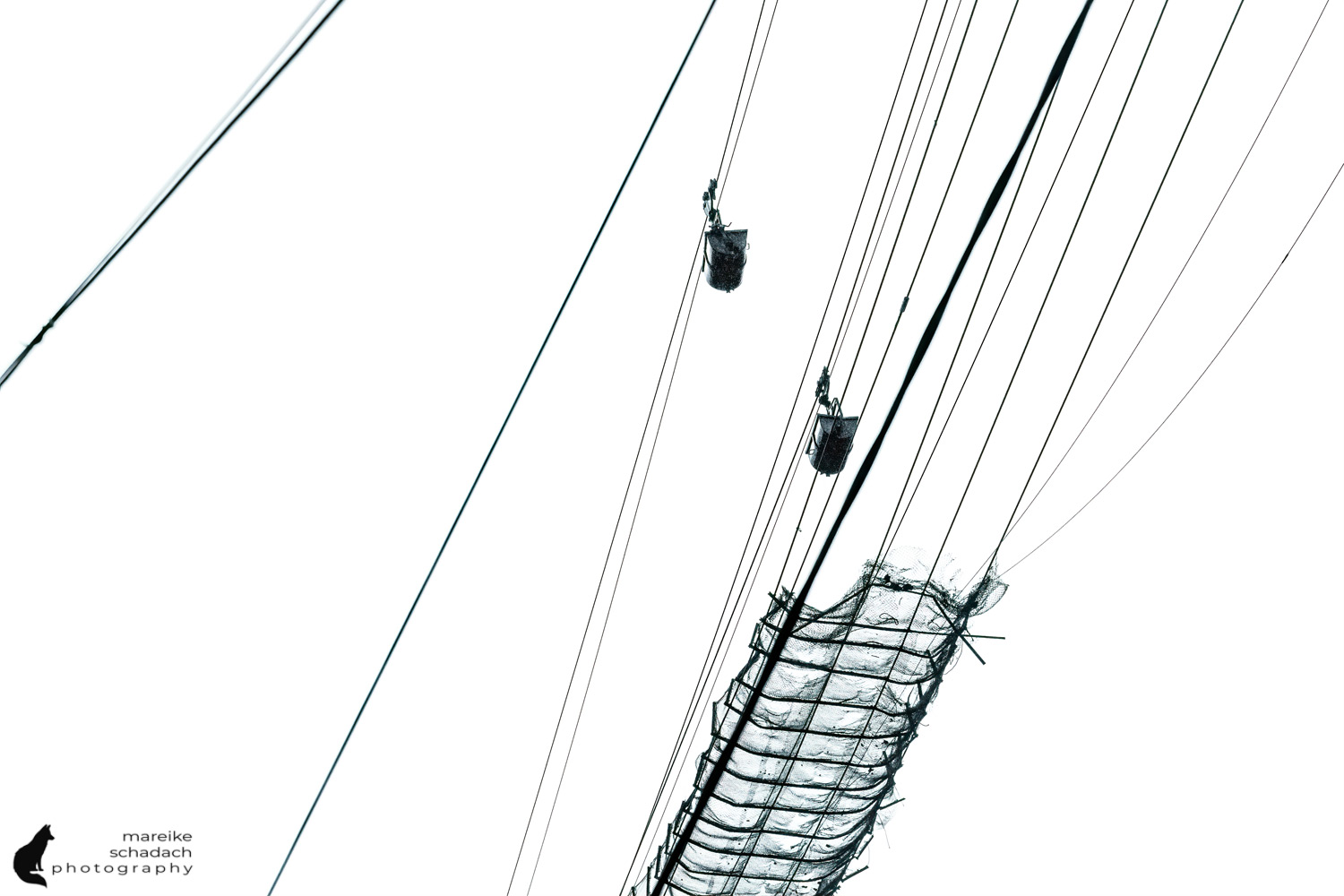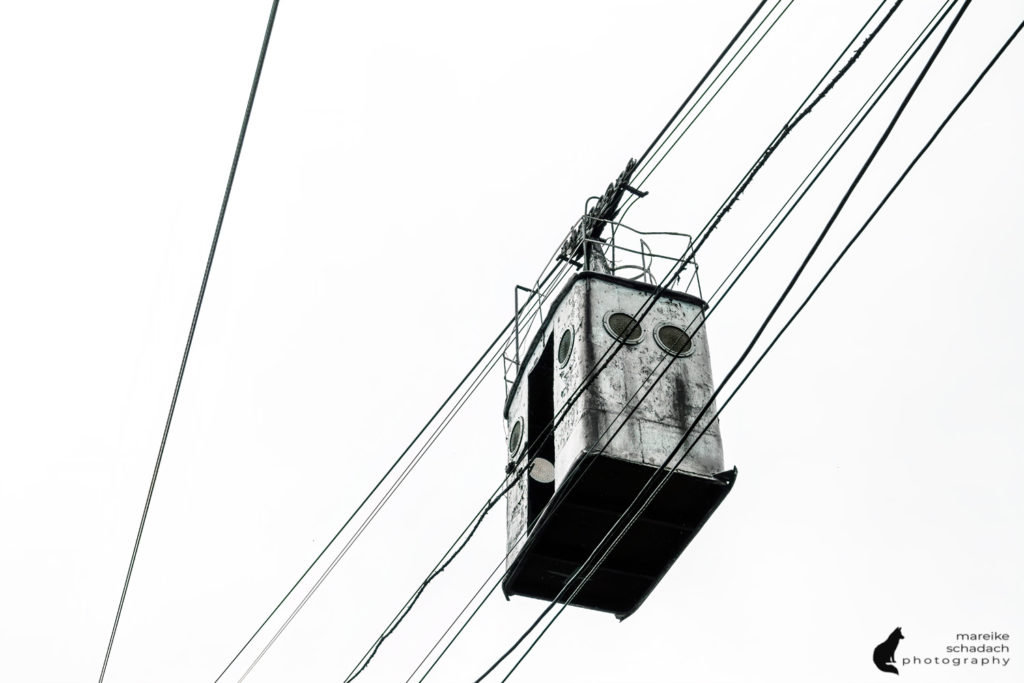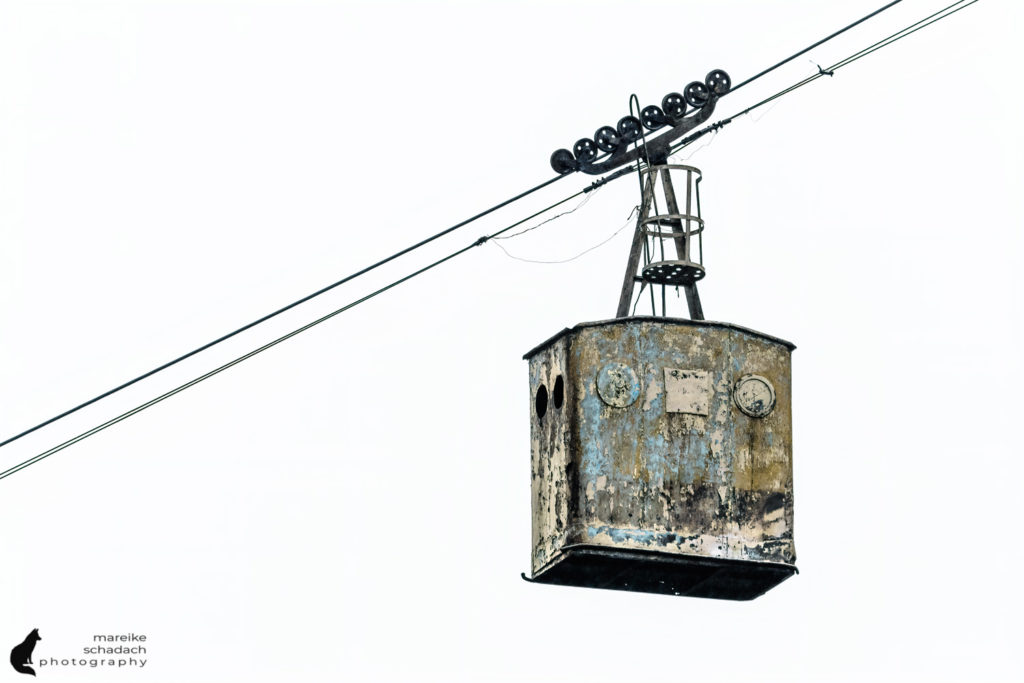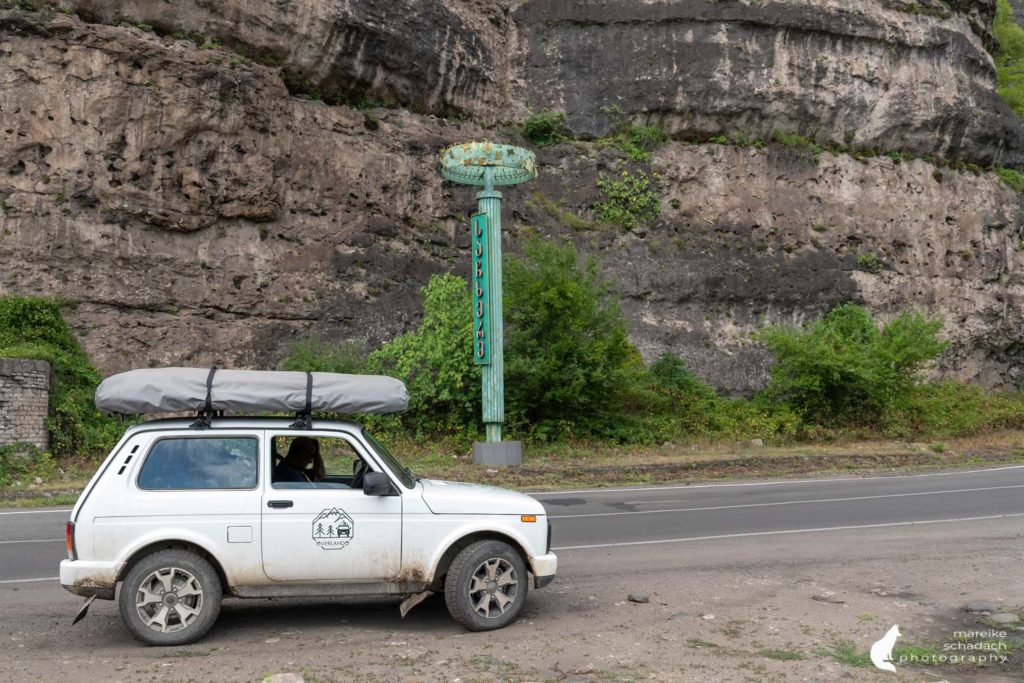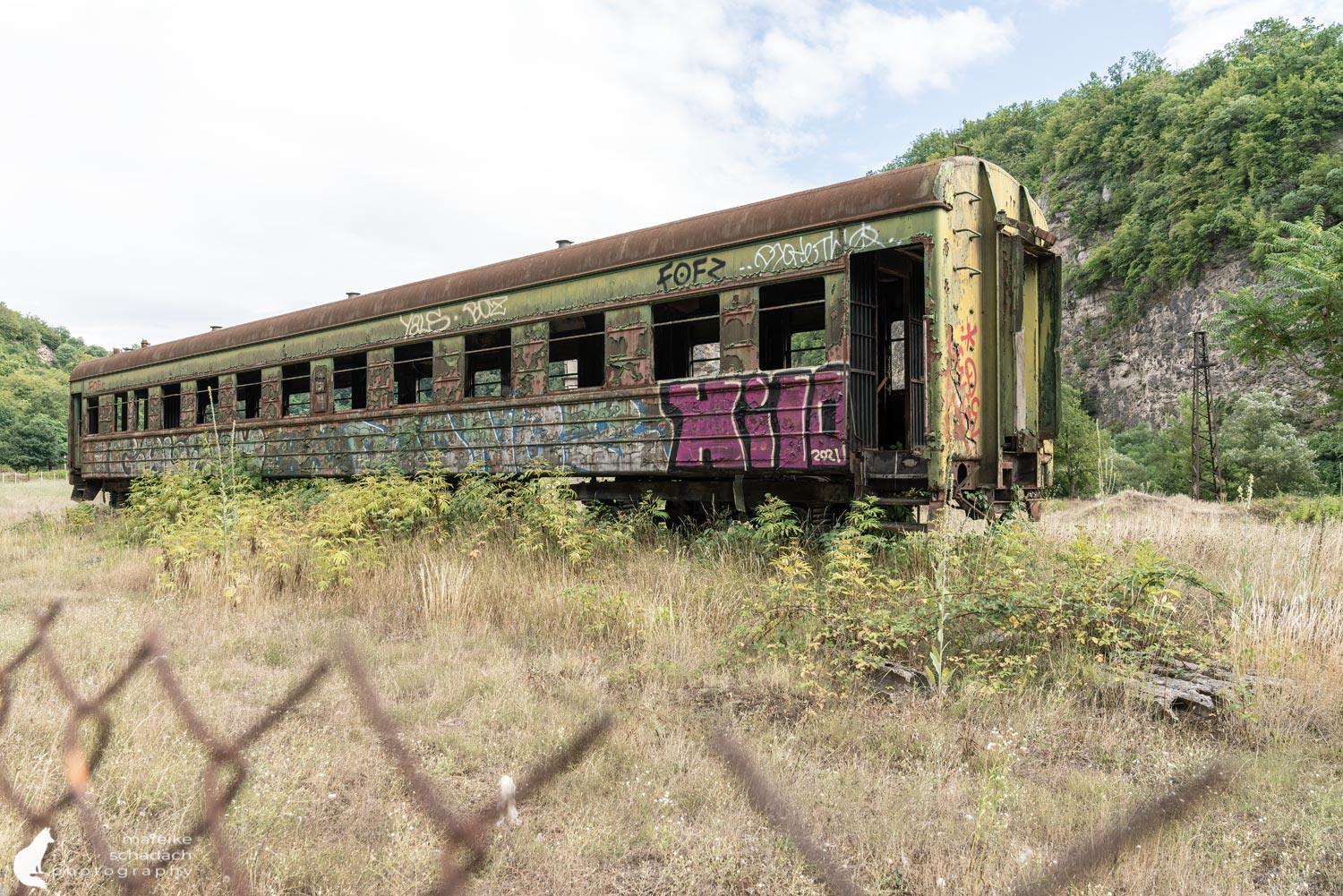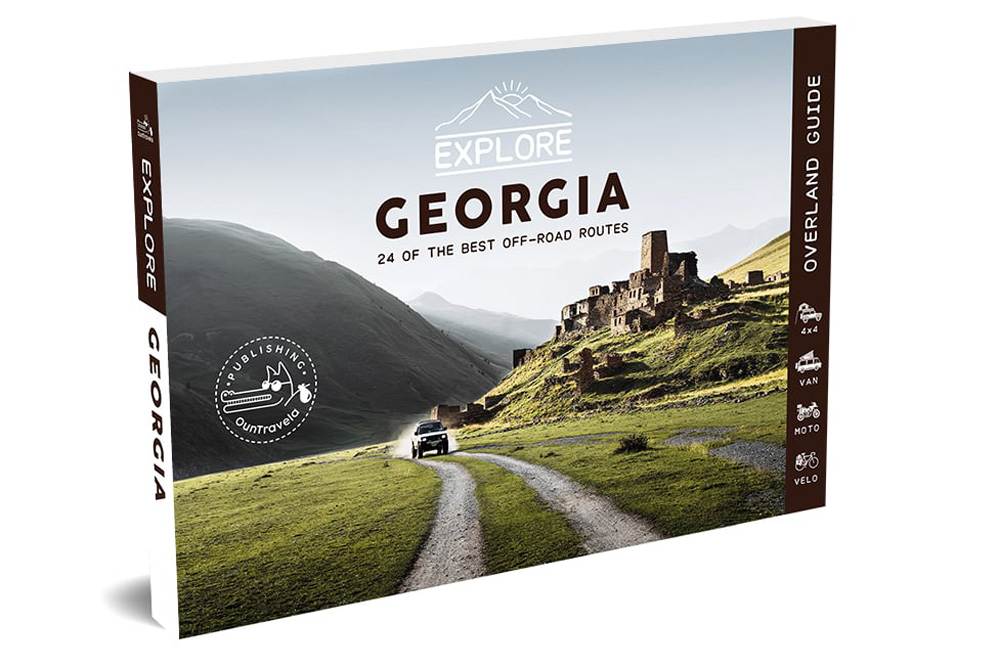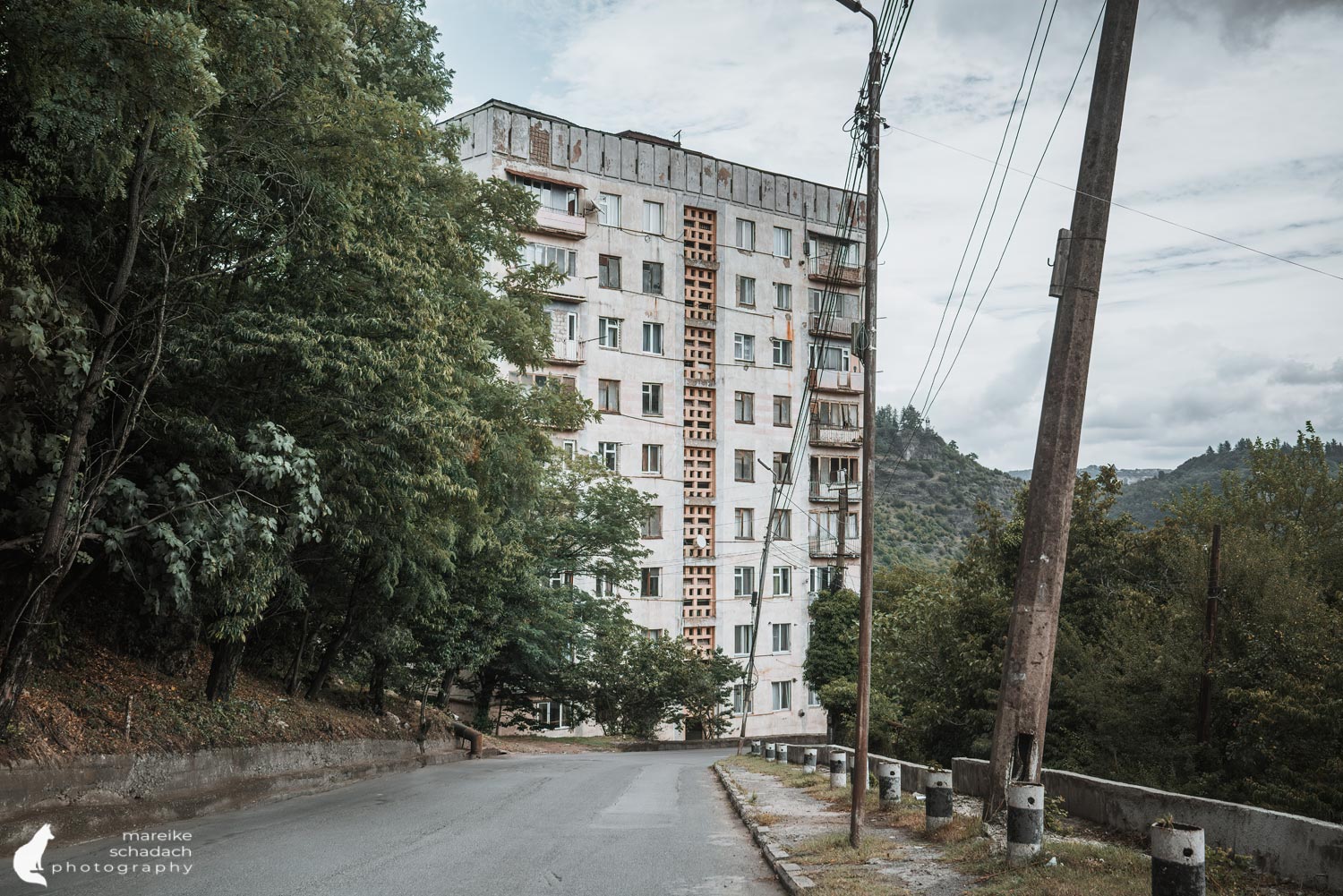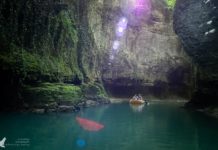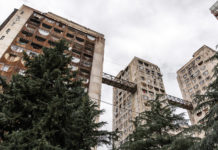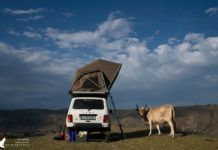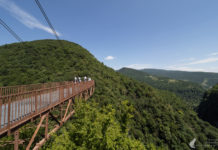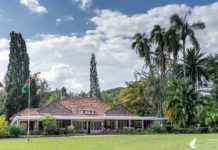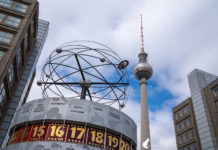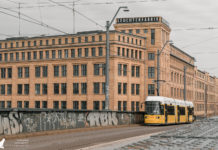Georgia. For more than 60 years, the "hanging coffins" transported the inhabitants of the industrial city of Chiatura to windy heights. But since summer 2019, the legendary cable cars of Chiatura have been at a standstill. In the end, the gondolas were a bit too rusty and the technology too outdated. But the cable car stations from the 1950s and 60s are still there and are witnesses to the history and the former glory of the city. And usually one or the other gondola still hangs in the air very close to the stations.
Unassigned, unpaid advertising. The article contains affiliate links.
When we visited Chiatura in July 2021, we were overwhelmed by the impressions. However, we were also a bit disoriented. There are indeed numerous blog articles on the Internet with great photos when the cable cars of Chiatura were still in operation. But where the photos were taken remained unclear. To make your search for Tschiatura's treasures a little easier, I have therefore compiled my favorite photo motifs in a map. So you can explore the city on your own and know immediately what awaits you where.
But first, let's go back to a time when Chiatura still looked into a rosy future.
In this Article you will find
Short History of Chiatura and the Cable Cars
Cable Cars, Buildings, Pioneer Palace and more
What's next for Chiatura?
How to get to Chiatura
What is the best way to get around the City?
What else is there in the Area?
Book Recommendations for Georgia
Short History of Tschiatura and the Cable Cars
Tschiatura was founded at the end of the 19th century and before the First World War possessed the largest manganese ore deposit in the world. Manganese mining at that time amounted to 60% of the world production. Even during the Soviet era, the city remained an important center of manganese mining. Investments were made, including the construction of ropeways.
Chiatura is located in a deeply cut, long valley of the Kvirila River. The main means of transportation were cable cars with a total length of more than 6,000 meters. The first cableway was built in Chiatura in 1953. More lines followed in the 1950s and 1960s. In total, there were 70 ropeways for transporting people, materials and manganese ore. This made Chiatura the city with the most ropeways in the world. For a long time, the hand-operated gondolas were the only means of public transportation in the city.
The cable cars operated almost without interruption until the summer of 2019. But eventually, the last two remaining passenger cable cars stopped operating due to official orders. During our stay we could only see one cargo line for the transport of ore in operation.
Cable Cars, Buildings, Pioneer Palace and more
Map with Photo Motifs
In the following map I marked most of the motives I describe in this chapter with a camera pin. For each pin there is also a small photo. So you can orientate yourselves more easily. The map should be a little help for your own explorations. However, there is so much more to discover in Chiatura and I could have easily spent two or three days here.
Tip: In the free app Maps.me you can download an offline map of Georgia. The map shows the cable car stations and lines. So you can explore even more stations.
Monumental Welcome
We entered the city on the main road coming from the west. Shortly after the town entrance sign, Chiatura greets us with an overwhelming monument commemorating World War II. Next to it, several prefabricated buildings provide a great background.
In the City Center
We wind our way down the road into the Kvirila Valley. Soon we reach the center of town with a small market, numerous stores, and typical chaotic city traffic. After parking our Lada, we are off. We don't know exactly where to go and stroll through the city for the time being. Every few meters we discover something new that fascinates us. Soon we come to the first cable car station. Shortly before the station a red-yellow gondola is still hanging. Remnants of the advertising signage are still visible.
From the underpass under the railroad tracks we come to the bridge over the Kvirila. To the right and left are architectural gems such as City Hall and the Registry Office, as well as whimsical structures on the riverbank housing stores.
In the center of the city, the elongated row of stores on the main street is a real eye-catcher. We follow the main street to the traffic circle on Ninoshvili Street. Here we find a large mosaic on the facade of the school.
Back on the main road we go a little further uphill and come to a market. There is also an old cable car station here.
Highlight of Chiatura: the Stalin Ropeway and Peace Ropeway
From here we walk along the bank of the Kvirila back towards the car. Very close to our parking place one of the highlights of Chiatura is waiting for us: the station of the Peace Ropeway and the Stalin Ropeway. The station itself is meanwhile firmly closed, but also from the outside it is a great motive and one can peek in at several places. I quickly spotted the black and white graffiti on the wall. Unfortunately only a part of it is visible, but I recognize it from photos on the internet: it shows a kneeling miner with a shovel. On both lines there are still two gondolas hanging in the air.
From the station, the yellow gondolas of the Stalin Ropeway across the river to the opposite mountain. This line was the first cable car in the Soviet Union in 1953. Accordingly, the gondolas are now rusty and the windows are cloudy from dirt and scratches. One gondola could carry six passengers. In addition, a gondola lady rode in each gondola. Her job was to ensure safe operation and report any abnormalities in the gondola to the mechanic.
The Peace Line goes north from the station. It is the line with the blue gondolas and dates back to 1964. This line is also the steepest cable car in Chiatura with a 48 degree incline and is even one of the steepest in the world. In the small gondolas fit just 4 people. There are also no more windows, as in the Stalin cable car, but only small barred portholes.
Detour to the Pioneer Palace
South of the Kvirila River, high up on the slope, is the former Pioneer Palace. You can reach it either by cable car or by your own car. The palace still shows its former splendor. The wide entrance staircase is lined with a large semicircle of columns. Some of them have already collapsed. The entire building is badly dilapidated and it appears that it will collapse like a house of cards at the next slight breeze. I myself did not go inside. Cows are less fearful and use the empty building as a shelter.
Cargo Ropeway in Action
We leave the city along the river in the direction of Tbilisi. After a short ride we finally see one of Chiatura's cable cars in action. It is a freight line for transporting the mined ore. Several gondolas cross the track, which is covered with nets in places. The nets are a damn good idea, because there are actually several chunks of rock in them that have fallen out of the ore gondolas.
Not far behind the freight gondolas is another disused passenger ropeway. Here, too, a gondola hangs in the air just before the station. You will also find an adventurous narrow pedestrian bridge leading to an industrial building.
Photo Motifs at the Exit of Chiatura
At the town exit we see a large Tschiatura sign and a green stele with a wreath. To the right of the road there are tracks and behind a fence there is a railroad wagon. All four give each of them again great photo motifs to say goodbye.
You are planning a road trip?
Travel Guide Book – Georgia – Caucasus*
This book by OunTravela invites you to explore the wildest corners of Georgia. Along 24 routes you will discover picturesque landscapes, rugged mountains, monasteries, fortresses, and centuries-old fortified towers. In addition to detailed descriptions of the 4x4 routes, you will find a wealth of additional information about the country and its people as well as tips for your planning. The latter range from suggestions for overnight campsites to rental companies of expedition-ready 4x4 vehicles and worthwhile photo spots. You can also purchase a map and GPS tracks for navigation.
What's next for Chiatura?
The legendary "hanging coffins" of Chiatura are now hanging in the air. So is the town's application to be included on the UNESCO World Heritage List. The rusty gondolas and Soviet-style cable car stations have long been the heartbeat of the city. So much of the city's history and individual stories are linked to the cable cars that, in my view, it would be unthinkable to abandon or even demolish the gondolas and stations. I wish so much for the city to be included in the industrial heritage list and would be happy if the shuttered sites were preserved and prepared for tourist visits. However, it is unclear whether this will succeed. After all, the new cable cars of Chiatura may be an obstacle for inclusion in the UNESCO list.
A little tourism would certainly do the city good. After all, the manganese reserves will not last forever. In about 15 years, the deposits in the area are expected to be exhausted. What will happen to the jobs and the inhabitants of the mining town then? The population has already shrunk by almost half since the early 1990s. The reason for this at the time was problems with electricity, water and gas supplies, as well as declining manganese mining. Today, around 13,000 people live in the city. How many of them then still see their future in a mining town without mining?
How to get to Chiatura
Chiatura is located about 60 kilometers from Kutaisi. It takes about 1.5 hours to reach the city by rental car or marshrutka. From Tbilisi it takes about 2-3 hours.
The city can also be reached by train. There are also guided tours from Tbilisi at GetYourGuide.
What is the best way to get around the City?
The center and some of the cable car stations in the valley can be explored very well on foot. Since the old cable cars of Tschiatura are no longer running, it is not so easy to reach the upper stations.
A new, modern cable car with four stations is currently under construction. Everything looked ready in July 2021. However, none was in operation yet. Possibly, the launch, like many other things, has been delayed by Covid-19. The main station of the new cable car is located in the center next to the river and near the stores.
How do you transport your camera equipment when traveling?
I've been looking for a backpack for a long time that is practical and spacious and can also be carried as hand luggage. I found what I was looking for with the Lowepro Flipside 400 AW. For two years, the camera backpack accompanies me almost everywhere. Click on the image to go to Amazon. If you buy a product via this affiliate link, I get a small commission and you help me to keep filling Fernweh-Motive with interesting content. The product will not be more expensive for you and you do me a huge favor.
Click on the image to go to Amazon. If you buy a product through this affiliate link, I get a small commission and you help me to keep filling Fernweh-Motive with interesting content. The product will not be more expensive for you and you do me a huge favor.

What else is there in the Area?
Only about 10 kilometers west of Chiatura is Kazchi Pillar. This is a freestanding rock about 40 meters high, on which there is a tiny monastery.
About halfway in the direction of Tbilisi is the town of Gori, where Stalin was born. The Stalin Museum was opened here in 1957 in his honor. Don't expect a detailed rehash of the atrocities the dictator committed during his reign here. It's more like a big cult palace, even souvenirs like coffee mugs, fridge magnets, baseball caps or backgammon games with Stalin's portrait are available here. was opened here in 1957 in his honor. Don't expect a detailed rehash of the atrocities the dictator committed during his reign here. It's more like a big cult palace, even souvenirs like coffee mugs, fridge magnets, baseball caps or backgammon games with Stalin's portrait are available here.
Book Recommendations for Georgia
Do you want to know where the journey is going? Then I can recommend this travel guides* to you.
You can order the travel guides on Amazon by clicking on the pictures. If you buy a product via an affiliate link, I get a small commission, and you help me to keep filling Fernweh-Motive with interesting articles. The product will not be more expensive for you, and you will do me a huge favor.
Have you ever been to Chiatura and maybe even used one of the cable cars? How did you like it? Do you have any questions about my article? If yes, then write me a comment!
Do you want to know when there are new articles on my blog? Then follow me on Facebook, Pinterest or Instagram. I would also be very happy if you share my article with your friends.
Recommendations for further Reading
Do you love Soviet architecture and lost places as much as I do? Then you might also be interested in my articles about Eisenhüttenstadt or about the GDR Architecture in Berlin.
